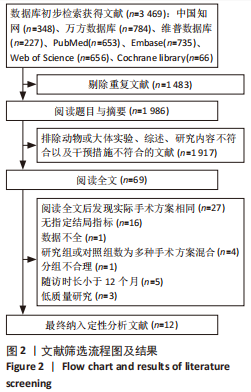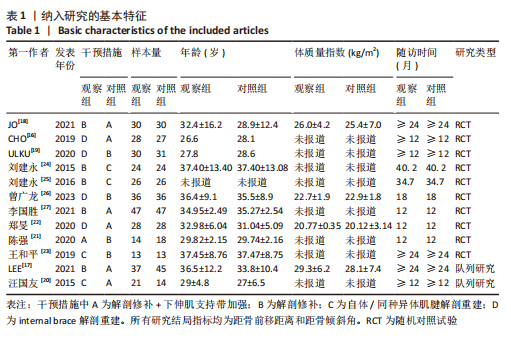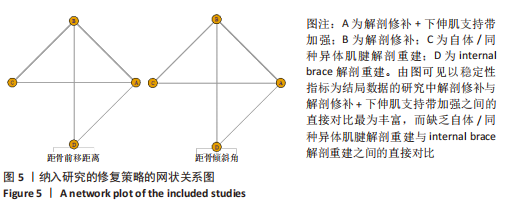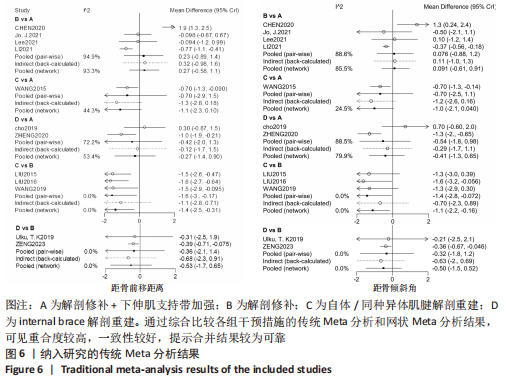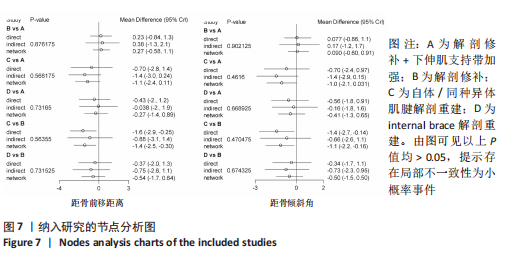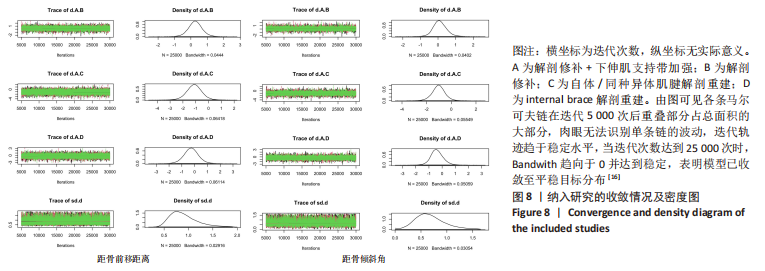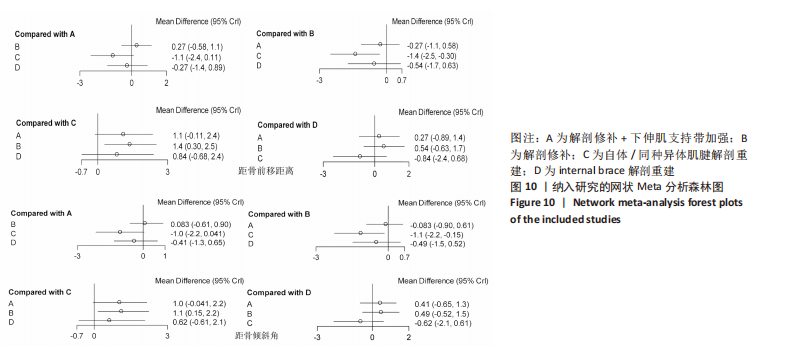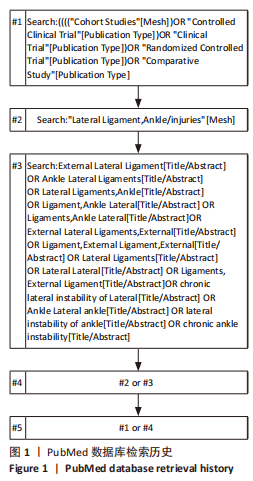[1] FEGER MA, GLAVIANO NR, DONOVAN L, et al. Current Trends in the Management of Lateral Ankle Sprain in the United States. Clin J Sport Med. 2017;27(2):145-152.
[2] 徐柯烽,林平,涂迎春,等.踝关节镜下修复距腓前韧带治疗慢性踝关节不稳[J].中华关节外科杂志(电子版),2020,14(5): 636-639.
[3] 魏合伟,郑维蓬,刘治军,等.氧化应激诱导肩袖肌腱干细胞自噬的表达[J].中国组织工程研究,2022,26(31):4954-4961.
[4] WIJNHOUD EJ, RIKKEN QGH, DAHMEN J, et al. One in Three Patients With Chronic Lateral Ankle Instability Has a Cartilage Lesion. Am J Sports Med. 2022:3635465221084365.
[5] CHOI YH, CHO SH, SEO J, et al. Apoptosis Occurs in the Anterior Talofibular Ligament of Patients With Chronic Lateral Ankle Instability: An In Vitro Study. Clin Orthop Relat Res. 2022;480(12):2420-2429.
[6] XU Y, SONG B, MING A, et al. Chronic ankle instability modifies proximal lower extremity biomechanics during sports maneuvers that may increase the risk of ACL injury: A systematic review. Front Physiol. 2022;13:1036267.
[7] XUE X, MA T, LI Q, et al. Chronic ankle instability is associated with proprioception deficits: A systematic review and meta-analysis. J Sport Health Sci. 2021;10(2):182-191.
[8] DELAHUNT E, BLEAKLEY CM, BOSSARD DS, et al. Clinical assessment of acute lateral ankle sprain injuries (ROAST): 2019 consensus statement and recommendations of the International Ankle Consortium. Br J Sports Med. 2018;52(20):1304-1310.
[9] LIN CC, LEE WC, CHEN JC, et al. The Influence of Kinesio Tape and an Ankle Brace on the Lower Extremity Joint Motion in Fatigued, Unstable Ankles during a Lateral Drop Landing. Int J Environ Res Public Health. 2021;18(11):6081.
[10] YIN L, LIU K, LIU C, et al. Effect of Kinesiology Tape on Muscle Activation of Lower Extremity and Ankle Kinesthesia in Individuals With Unilateral Chronic Ankle Instability. Front Physiol. 2021;12:786584.
[11] 王金杰,庄汝杰. Endobutton技术在慢性踝关节外侧不稳外侧韧带重建术中的应用[J].中医正骨,2021,33(5):71-73.
[12] LEI T, QIAN H, LEI P, et al. Lateral augmentation reconstruction system versus modified Brostrom-Gould procedure: A meta-analysis of RCTs. Foot Ankle Surg. 2021; 27(3):263-270.
[13] 曾宪涛,曹世义,孙凤,等.Meta分析系列之六:间接比较及网状分析[J].中国循证心血管医学杂志,2012,4(5):399-402.
[14] 王巍巍,杨智荣,孙凤,等.网状Meta分析GRADE证据总结表的制订、解读与应用[J].中国循证医学杂志,2020,20(12):1471-1476.
[15] 易跃雄,张蔚,刘小媛,等. 网状Meta分析图形结果解读[J].中国循证医学杂志,2015, 15(1):103-109.
[16] CHO BK, PARK JK, CHOI SM, et al. A randomized comparison between lateral ligaments augmentation using suture-tape and modified Broström repair in young female patients with chronic ankle instability. Foot Ankle Surg. 2019; 25(2):137-142.
[17] LEE SH, CHO HG, YANG JH. Additional Inferior Extensor Retinaculum Augmentation After All-Inside Arthroscopic Anterior Talofibular Ligament Repair for Chronic Ankle Instability Is Not Necessary. Am J Sports Med. 2021; 49(7):1721-1731.
[18] JO J, LEE JW, KIM HJ, et al. Arthroscopic All-Inside Anterior Talofibular Ligament Repair with and without Inferior Extensor Retinacular Reinforcement: A Prospective Randomized Study. J Bone Joint Surg Am. 2021;103(17):1578-1587.
[19] ULKU TK, KOCAOGLU B, TOK O, et al. Arthroscopic suture-tape internal bracing is safe as arthroscopic modified Broström repair in the treatment of chronic ankle instability. Knee Surg Sports Traumatol Arthrosc. 2020; 28(1):227-232.
[20] 汪国友,徐平,曾胜强,等.关节镜辅助部分腓骨长肌重建踝关节外侧韧带的研究[J].足踝外科电子杂志,2015,2(2):1-5.
[21] 陈强,刘丹,刘满建.关节镜下改良Brostrom术式治疗踝关节不稳的临床观察[J].医学理论与实践,2020,33(18):3043-3045.
[22] 郑旻,黄伟杰,滕跃,等.关节镜下韧带增强固定与改良Brostrom术治疗慢性踝关节外侧不稳定的效果比较[J].临床外科杂志, 2020,28(4):319-323.
[23] 王和平.距腓前韧带/跟腓韧带解剖重建与改良Brostrom法治疗慢性踝关节外侧不稳定对比观察[J].足踝外科电子杂志, 2019,6(2):51-53.
[24] 刘建永,王英振,姜鑫.慢性踝关节外侧不稳定解剖重建与修复疗效的比较观察[J].中国矫形外科杂志,2015,23(18):1667-1672.
[25] 刘建永.慢性踝关节外侧不稳定距腓前韧带和跟腓韧带解剖重建[J].中国运动医学杂志, 2016,35(2):126-131.
[26] 曾广龙,谢庆祥,李泳聪,等.慢性踝关节外侧不稳全关节镜下距腓前韧带锚钉修复与可吸收免打结线带重建的比较[J].中国组织工程研究,2023,27(13):2064-2070.
[27] 李国胜.全关节镜下锚钉修复对慢性踝关节不稳距腓前韧带损伤术后患者踝关节功能的影响[J].中国疗养医学,2021,30(3): 309-311.
[28] MURPHY GA. The modified Broström techniquefor reconstruction of chronic lateral ankle instability. Oper Tech Sports Med. 1999; 7(1):36-40.
[29] DALMAU-PASTOR M, MALAGELADA F, KERKHOFFS GMMJ, et al. X-shaped inferior extensor retinaculum and its doubtful use in the Bröstrom-Gould procedure. Knee Surg Sports Traumatol Arthrosc. 2018;26(7):2171-2176.
[30] ZENG G, HU X, LIU W, et al. Open Broström-Gould Repair vs Arthroscopic Anatomical Repair of the Anterior Talofibular Ligament for Chronic Lateral Ankle Instability. Foot Ankle Int. 2020;41(1):44-49.
[31] JEONG BO, KIM MS, SONG WJ, et al. Feasibility and outcome of inferior extensor retinaculum reinforcement in modified Broström procedures. Foot Ankle Int. 2014;35(11):1137-1142.
[32] LI J, QI W, YUN X, et al. Comparison of Modified Broström Procedure with or without Suture Tape Augmentation Technique for the Chronic Lateral Ankle Instability. Biomed Res Int. 2022; 2022:6172280.
[33] 徐又佳,沈光思,陈世益.人工韧带修复前交叉韧带的临床应用[J].中华创伤杂志, 2017,33(2):100-103.
[34] 严浩,齐志明.纳米材料人工韧带骨连接及在抗粘连领域的研究与应用[J].中国组织工程研究,2021,25(16):2605-2611.
[35] XU X, HU M, LIU J, et al. Minimally invasive reconstruction of the lateral ankle ligaments using semitendinosus autograft or tendon allograft. Foot Ankle Int. 2014;35(10):1015-1021.
[36] LI Q, MA K, TAO H, et al. Clinical and magnetic resonance imaging assessment of anatomical lateral ankle ligament reconstruction: comparison of tendon allograft and autograft. Int Orthop. 2018;42(3):551-557.
[37] 徐玥,李卫平,江川,等.关节镜下距腓前韧带联合跟腓韧带解剖重建术的临床疗效[J].中华骨科杂志,2019,39(11):667-674.
[38] 王成伟,郭鹏超,王雪,等.同种异体肌腱及自体腓骨短肌重建踝关节外侧副韧带的比较[J].中国组织工程研究,2015,19(30): 4908-4914.
[39] RUPP MC, DEGENHARDT H, WINKLER PW, et al. High return to sports and return to work rates after anatomic lateral ankle ligament reconstruction with tendon autograft for isolated chronic lateral ankle instability. Knee Surg Sports Traumatol Arthrosc. 2022; 30(11):3862-3870.
[40] ZHI X, ZHANG Y, LI W, et al. Absorbable suture anchor and knotless anchor techniques produced similar outcomes in arthroscopic anterior talofibular ligament repair. Knee Surg Sports Traumatol Arthrosc. 2022;30(6):2158-2165.
[41] YANG KC, CHEN PY, LOH C, et al. Chronic Lateral Ankle Instability Treated With Tendon Allografting: A Preliminary Comparison of Arthroscopic and Open Anatomic Ligament Reconstruction. Orthop J Sports Med. 2022;10(10):23259671221126693.
[42] SONG YJ, HUA YH. Similar Outcomes at Early Term After Arthroscopic or Open Repair of Chronic Ankle Instability: A Systematic Review and Meta-Analysis. J Foot Ankle Surg. 2019;58(2):312-319.
|

